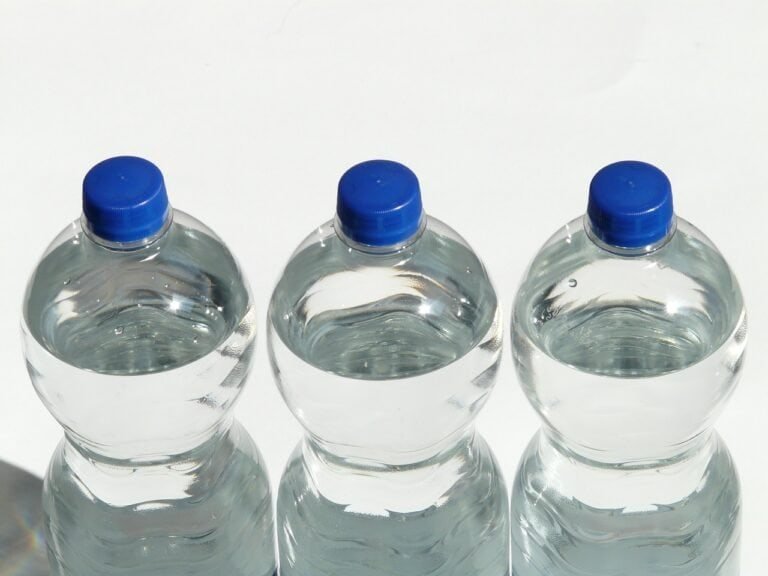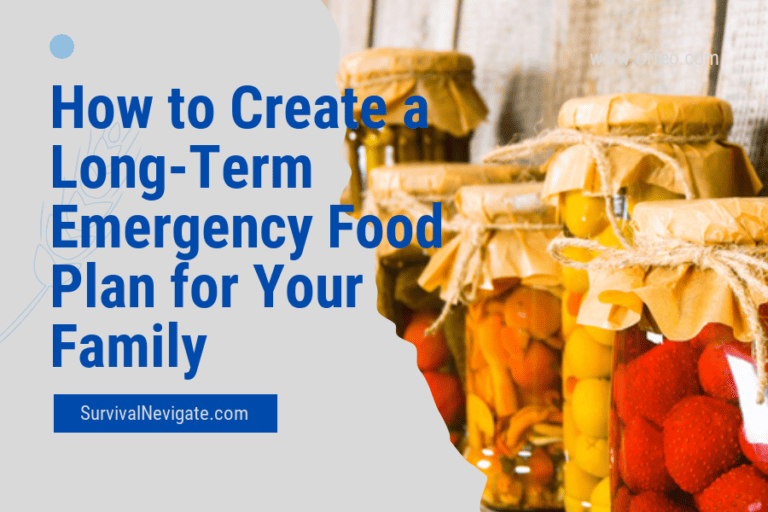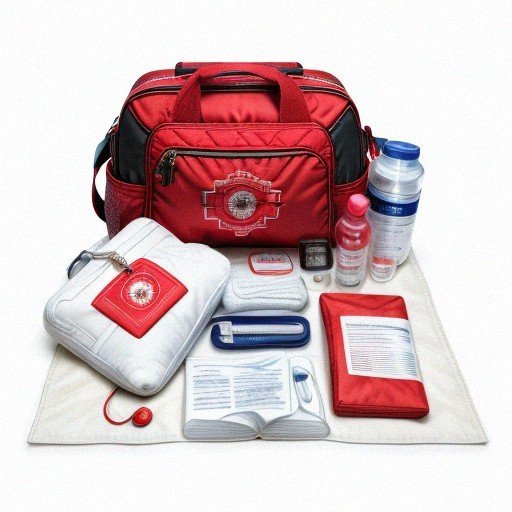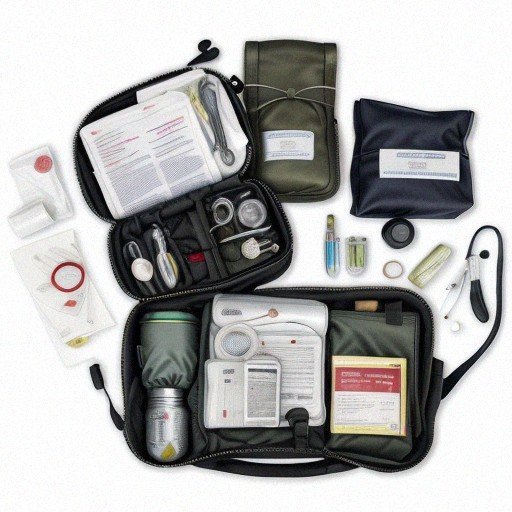Stay One Step Ahead – How To Create A Natural Disaster Preparedness Plan
Welcome, reader! In this guide, I will teach you how to create a natural disaster preparedness plan so that you can stay one step ahead of any potential challenges that may come your way. By taking some simple steps and being proactive, you can ensure that you and your loved ones are well-prepared to face any kind of disaster.
Whether it’s a hurricane, wildfire, earthquake, or any other natural calamity, having a plan in place will help you respond effectively and keep yourself safe. So let’s dive in and learn how to create a natural disaster preparedness plan that will give you the peace of mind you deserve.
Quick Tips
Tip 1: Stay informed by signing up for emergency alerts. Fill out the online form with your contact information and receive important updates via text messages or phone calls. This will help you stay one step ahead of any incoming natural disasters.
Tip 2: Create a family emergency plan. Sit down with your family and discuss what to do in case of a natural disaster. Designate meeting points, establish communication methods, and assign responsibilities to each family member. This will ensure everyone knows what to do and where to go when disaster strikes.
Tip 3: Build an emergency supply kit. Gather essential items like non-perishable food, water, a flashlight, batteries, a first aid kit, and a radio. Store these items in a waterproof container, easily accessible in case of an emergency. Having a well-stocked supply kit will help you stay self-sufficient during a natural disaster.
Tip 4: Know your evacuation routes. Research and familiarize yourself with the different evacuation routes in your area. Identify which roads to take and have alternate routes in mind. This will help you evacuate quickly and safely when necessary, ensuring you stay one step ahead of any potential danger.
Assess the Risks: Evaluate the specific natural disasters that pose a threat in your region
A few key steps will help you assess the risks of natural disasters in your region and ensure you’re prepared. First, assess the specific natural disasters that threaten your region. This could include hurricanes, earthquakes, wildfires, floods, or tornadoes, among others. By understanding which disasters are most likely to occur, you can focus your preparedness efforts on the areas that need the most attention.
Next, gather relevant information about these natural disasters. Research historical data to determine the frequency and severity of these events in your region. Look for any patterns or trends that can help you gauge the potential risks. Additionally, learn about the warning signs and early indicators of each type of disaster. This knowledge will enable you to be more proactive in your preparations and response.
Finally, create a plan tailored to the specific risks in your area. Identify the steps you need to take before, during, and after each type of natural disaster. This may include securing your home, having emergency supplies on hand, knowing evacuation routes, and establishing a communication plan with your family and neighbors. Remember to regularly review and update your plan as needed to ensure it remains current. By assessing the risks and creating a comprehensive plan, you can greatly increase your chances of staying safe during a natural disaster.
Create an Emergency Kit: Compile essential supplies like food, water, and first aid items
Creating an emergency kit can be a lifesaver in times of crisis. To begin, gather essential supplies like food, water, and first aid items. Start by including non-perishable food items such as canned goods, granola bars, and crackers. Aim to have enough food to sustain you and your family for at least three days. Don’t forget to include a manual can opener for those canned goods!
Next, water is a crucial component of any emergency kit. Pack one gallon of water for each person per day, keeping in mind that you may need extra for cooking and hygiene purposes. Consider storing water in sturdy containers that are easy to carry and won’t break easily. If space is limited, you can also include water purification tablets or a portable water filter to ensure a safe and clean supply.
Lastly, don’t overlook the importance of first aid items. Gather a comprehensive first aid kit that includes bandages, antiseptic wipes, pain relievers, and any necessary prescription medications. Familiarize yourself with the contents of your kit and consider taking a first aid course to be prepared for any medical emergencies that may arise.
If you live in an uncertain world, it is crucial that you prepare an emergency kit ahead of time. By compiling essential supplies like food, water, and first aid items, you can ensure that you are equipped to handle unexpected situations. Take the time to gather these items now so that you can have peace of mind knowing that you are prepared for whatever may come your way.

Develop a Communication Plan: Establish a prearranged way to contact family members and local authorities during emergencies
During emergencies, it is crucial to have a communication plan in place to ensure the safety and well-being of your family members and to easily reach out to local authorities for help. Start by designating a meeting point in case you are separated, such as a neighbor’s house or a nearby park.
Make sure everyone in your family knows the address and how to get there. Create a list with important phone numbers, including the local police department, fire department, and hospitals, as well as the contact information for family members and close friends. Keep this list in a easily accessible place, like on the refrigerator or by the phone.
Next, establish an emergency contact person who lives outside your immediate area. During a crisis, local phone lines may become jammed or inaccessible, making it difficult to reach loved ones. Having an out-of-town contact person provides an alternative method to communicate and relay information.
Share this person’s contact information with all members of your family and make sure everyone knows to call them in case of an emergency. Having a designated emergency contact person helps ensure that everyone is safe and informed during uncertain times.
In addition, you may wish to consider integrating technology into your communication plan to improve its effectiveness. Make sure all cellphones are fully charged during emergencies and be aware that electricity may be lost, limiting access to outlets.
Additionally, familiarize yourself with emergency alert channels and notifications that are available through radio, TV, or smartphone apps. These channels provide real-time updates and important instructions from local authorities, enhancing your ability to respond to emergencies effectively.
By developing a communication plan and incorporating these strategies, you can stay connected with your family and local authorities when it matters most.

Secure Your Property: Reinforce vulnerable structures, install protective measures, and clear potential hazards
Are you looking to secure your property and keep it safe from potential threats? Follow this simple how-to style outline to reinforce vulnerable structures, install protective measures, and clear potential hazards. By taking these steps, you can ensure the safety and security of your property.
To begin, assess your property for any vulnerable structures that may be prone to damage or break-ins. Check for weak points such as old doors or windows that can easily be forced open. Reinforce these structures by installing sturdy locks, deadbolts, and security bars. Make sure all doors have a solid frame and consider adding peepholes or security cameras for added protection. By strengthening these weak points, you create a barrier that deters potential intruders from attempting to gain access to your property.
Next, consider installing protective measures such as a security alarm system or surveillance cameras. These will act as a deterrent and provide you with peace of mind knowing that your property is being monitored. Place security cameras in strategic locations around your property, such as near entrances and in areas with valuable items. Additionally, ensure that your alarm system is installed by a professional and regularly tested to ensure it is in working order. Having these protective measures in place will not only deter criminals but also provide you with evidence in the event of a break-in.
Lastly, take the time to clear potential hazards around your property. Trim overgrown bushes and hedges to eliminate hiding places for potential intruders. Remove any debris or objects that can be used to gain access to your property, such as ladders or tools. Adequate outdoor lighting is also essential in deterring criminals, so consider installing motion-activated lights near entrances and around your property perimeter. By clearing potential hazards and ensuring visibility around your property, you minimize the risk of break-ins and make it less appealing to potential intruders.
With these how-to steps, you can make sure that your property is secure and protected against possible threats. Remember to reinforce vulnerable structures, install protective measures, and clear potential hazards. By taking these steps, you can enhance the safety and security of your property, providing you with peace of mind.
Conclusion
Creating a natural disaster preparedness plan can save our lives by keeping us one step ahead of the unexpected by keeping us protected from the dangers of natural disasters. Identifying the natural disasters that pose a threat to our region and developing strategies to mitigate their impact can be done by assessing the risks in our region.
Creating an emergency kit ensures that we have essential supplies readily available when disaster strikes, while a communication plan allows us to reach out to our loved ones and local authorities during emergencies. It is essential to remember that natural disasters can happen at any time, and being prepared can make all the difference in preserving our safety and wellbeing.
So, let us take the initiative and prioritize creating a natural disaster preparedness plan – after all, it is always better to be safe rather than sorry.
FAQ
Having a natural disaster preparedness plan is crucial for several reasons. First, it ensures the safety and well-being of yourself and your loved ones. It helps minimize panic and confusion during emergencies and enables you to make informed decisions quickly. Secondly, a preparedness plan can also reduce property damage and financial losses by outlining preventive measures and strategies. Lastly, it allows you to be self-sufficient in the event of an emergency when professional help may be limited or delayed.
Q: How do I determine the types of natural disasters I should prepare for?
A: The types of natural disasters you should prepare for depend on your geographic location. Research and identify the most common natural disasters in your area, such as hurricanes, earthquakes, floods, tornadoes, wildfires, or severe storms. Local government websites, emergency management agencies, or meteorological organizations can provide valuable information on the specific risks in your region.
Q: What are the essential items I should include in my emergency supply kit?
A: Your emergency supply kit should contain essential items to sustain you and your family for at least 72 hours. Some key items include:
– Water: One gallon per person per day
– Non-perishable food items: Canned goods, energy bars, and dry foods
– First aid kit: Bandages, antiseptic, medications, etc.
– Flashlights and extra batteries
– Battery-powered radio or hand-crank radio
– Important documents: Copies of identification, insurance policies, and contact information
– Emergency contact list: Phone numbers of relatives, friends, and emergency services
– Cash: Small bills and coins
– Personal hygiene items
– Blankets and extra clothing
– Tools: Can opener, knife, duct tape, etc.
Q: How can I ensure the safety of my family during a natural disaster?
A: To ensure the safety of your family during a natural disaster, it is essential to:
– Develop an emergency communication plan: Establish meeting points, designate an out-of-area emergency contact, and educate family members on the plan.
– Stay informed: Regularly monitor weather alerts, news, or emergency services updates for the latest information on the situation.
– Evacuation planning: Identify evacuation routes and shelters in your area. Practice evacuation drills with your family, including pets, to ensure everyone knows what to do.
– Secure your home: Reinforce windows, clear gutters, trim trees, and secure outdoor objects that could become projectiles in high winds.
– Create a safe room: Determine a designated safe room within your home that can provide protection during severe weather events, such as basements or interior rooms on the ground floor.
– Educate yourself: Learn basic first aid, CPR, and other essential emergency response techniques. Also, familiarize yourself with how to shut off utilities like gas, water, and electricity.
Q: What should I include in my family emergency communication plan?
A: Your family emergency communication plan should include:
– Emergency contact information: Compile a list of phone numbers for family members, neighbors, healthcare providers, schools, workplaces, and utility companies.
– Out-of-area contact: Designate a friend or relative who lives outside your area as a central point of contact.
– Meeting points: Establish primary and secondary meeting points both within your neighborhood and outside your immediate area.
– Plan for children and pets: Discuss arrangements for ensuring the safety and communication of children or pets during emergencies.
Q: How can I prepare my home for a natural disaster?
A: To prepare your home for a natural disaster, follow these steps:
– Conduct a hazard assessment: Identify potential risks such as loose or damaged roof shingles, cracked foundations, or overhanging trees. Address these issues promptly to minimize damage.
– Secure heavy furniture and appliances: Anchor large furniture and appliances to the wall to prevent them from toppling over during earthquakes or strong winds.
– Install smoke and carbon monoxide detectors: Ensure you have properly functioning smoke and carbon monoxide detectors on every floor of your home.
– Maintain an emergency kit: Store essential supplies, including water, non-perishable food, flashlights, batteries, and first aid kits in a designated area.
– Create a home inventory: Document your possessions, including photos, descriptions, and values, for insurance purposes in case of damage or loss.
Q: What should I do if a natural disaster is imminent?
A: If a natural disaster is imminent, take the following steps:
– Monitor local news and official sources for updates and instructions.
– Follow evacuation orders from local authorities promptly. Gather your emergency supplies and secure your home before leaving.
– If evacuation is not necessary, stay indoors and listen to a battery-powered or hand-crank radio for updates.
– Take shelter in a safe room or designated area of your home away from windows during severe weather events.
– Stay away from downed power lines, flooded areas, and unstable structures.
– Check on your neighbors, particularly the elderly or those with disabilities, to ensure their safety.
When a natural disaster strikes, always follow the instructions and guidelines provided by local authorities, as they are the primary source of current and accurate information.







